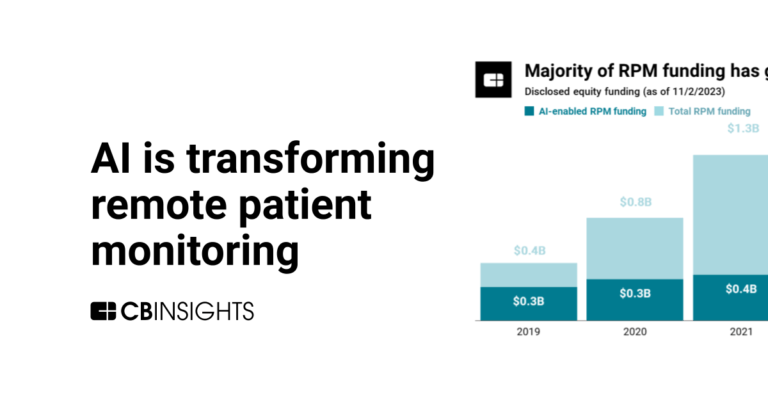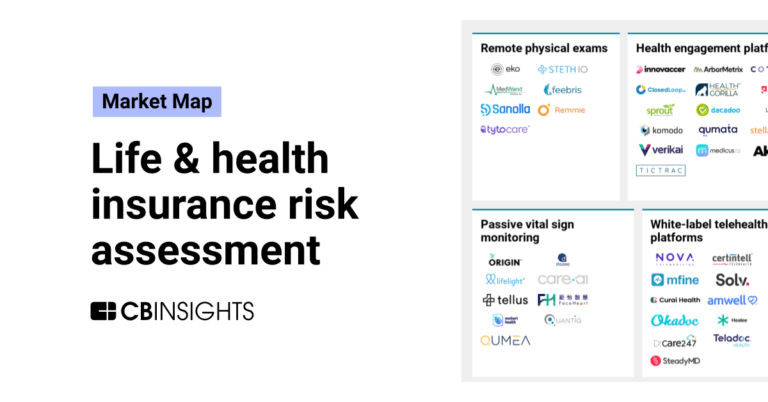
Huma
Founded Year
2011Stage
Series D | AliveTotal Raised
$367.6MValuation
$0000Last Raised
$80M | 4 mos agoRevenue
$0000Mosaic Score The Mosaic Score is an algorithm that measures the overall financial health and market potential of private companies.
+37 points in the past 30 days
About Huma
Huma specializes in digital health technology and focuses on advancing digital-first care and research in the healthcare sector. The company offers a range of AI-powered healthcare solutions, including remote patient monitoring systems, decentralized clinical trials, and companion apps designed to support patients through treatment and drug therapies. Huma's products are used by various sectors, including healthcare systems, pharmaceuticals, and medtech industries. Huma was formerly known as Medopad. It was founded in 2011 and is based in London, United Kingdom.
Loading...
Huma's Product Videos
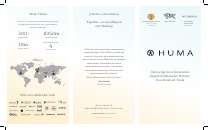
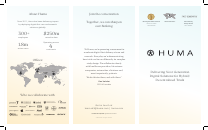
ESPs containing Huma
The ESP matrix leverages data and analyst insight to identify and rank leading companies in a given technology landscape.
The decentralized clinical trials platforms market specifically encompasses software and technology solutions designed to facilitate and manage remote clinical trials. These platforms integrate various components such as telemedicine, mobile health applications, and wearable device data collection to enable trial activities without frequent site visits. By streamlining remote participation, these …
Huma named as Highflier among 15 other companies, including ObvioHealth, Medable, and Medidata.
Huma's Products & Differentiators
Software as a Medical Device, Companion Apps
Huma’s enterprise-level regulated platform gathers real-world evidence, reduces readmission rates, and builds stronger, longer-term relationships with care providers and customers. Huma’s regulated, scalable platform enables the continuous collection of high-quality patient data across a wide range of therapeutic areas and care pathways, reducing readmissions. Support across 60 countries, our clinically-proven platform can effectively optimise global MedTech and Pharma deployments and extend data collection across diverse patient populations. Huma’s highly configurable platform offers the flexibility needed to demonstrate device efficacy and support regulatory submissions through near real-time data capture at both an individual and population level.
Loading...
Research containing Huma
Get data-driven expert analysis from the CB Insights Intelligence Unit.
CB Insights Intelligence Analysts have mentioned Huma in 13 CB Insights research briefs, most recently on Oct 17, 2024.
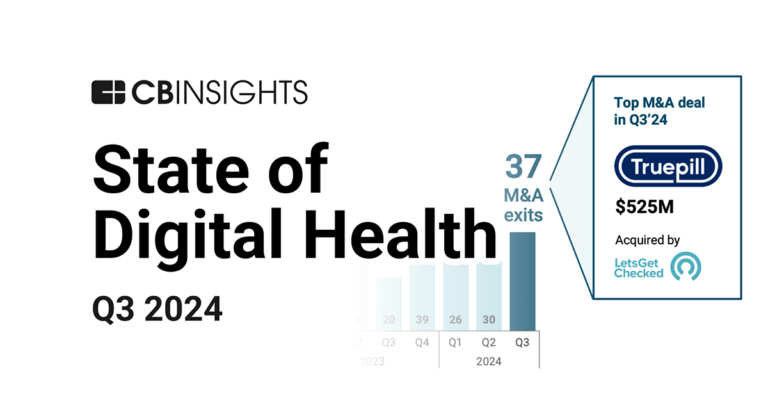
Oct 17, 2024 report
State of Digital Health Q3’24 Report

Aug 21, 2024
The clinical trials tech market map
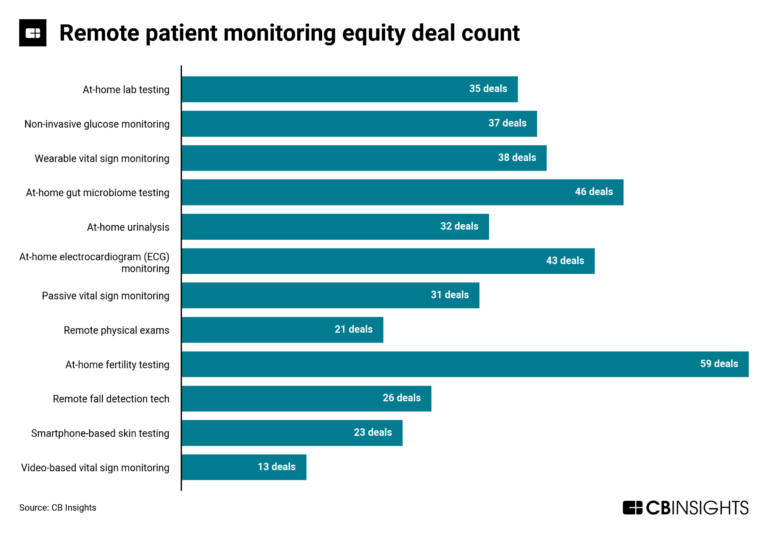
Aug 15, 2023
The remote patient monitoring market map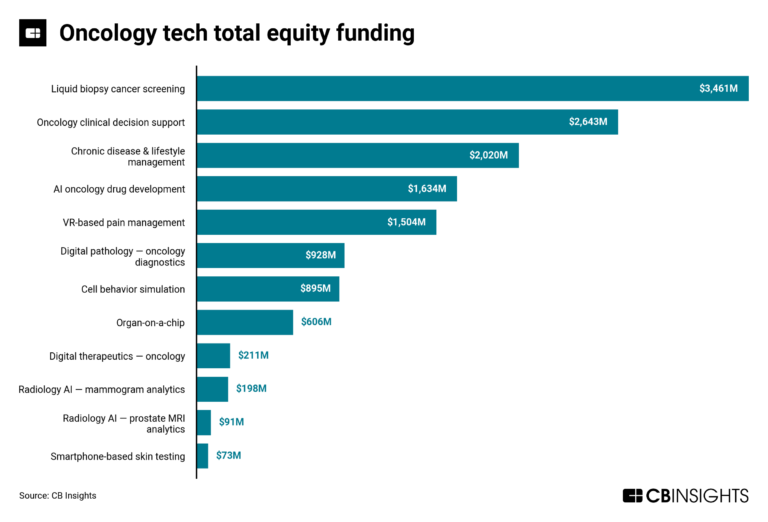
Aug 10, 2023
The oncology tech market mapExpert Collections containing Huma
Expert Collections are analyst-curated lists that highlight the companies you need to know in the most important technology spaces.
Huma is included in 6 Expert Collections, including Unicorns- Billion Dollar Startups.
Unicorns- Billion Dollar Startups
1,249 items
AI 100
100 items
Artificial Intelligence
9,055 items
Companies developing artificial intelligence solutions, including cross-industry applications, industry-specific products, and AI infrastructure solutions.
Value-Based Care & Population Health
1,067 items
The VBC & Population Health collection includes companies that enable and deliver care models that address the health needs for defining populations along the continuum of care, including in the community setting, through participation, engagement, and targeted interventions.
Digital Health
11,109 items
The digital health collection includes vendors developing software, platforms, sensor & robotic hardware, health data infrastructure, and tech-enabled services in healthcare. The list excludes pureplay pharma/biopharma, sequencing instruments, gene editing, and assistive tech.
Telehealth
3,106 items
Companies developing, offering, or using electronic and telecommunication technologies to facilitate the delivery of health & wellness services from a distance. *Columns updated as regularly as possible; priority given to companies with the most and/or most recent funding.
Huma Patents
Huma has filed 7 patents.
The 3 most popular patent topics include:
- smartwatches
- arteries of the head and neck
- arteries of the upper limb

Application Date | Grant Date | Title | Related Topics | Status |
|---|---|---|---|---|
2/6/2019 | Blood pressure, Arteries of the upper limb, Arteries of the head and neck, Vascular diseases, Hypertension | Application |
Application Date | 2/6/2019 |
|---|---|
Grant Date | |
Title | |
Related Topics | Blood pressure, Arteries of the upper limb, Arteries of the head and neck, Vascular diseases, Hypertension |
Status | Application |
Latest Huma News
Oct 30, 2024
Timothy Yap: How do you see the potential of gen AI? A lot of people are talking about gen AI and AI in general. How do you see it impacting your business? Dan Vahdat: We’re currently using it in two ways. We have our Huma Cloud Platform, which anybody can use to configure healthcare solutions—and, depending on the modules and functionality used, they may quickly receive US and EU approval, thanks to our good global coverage. That is just fantastic, because in the old world, regulatory approval would’ve taken four or five years. In the new world, it only takes a few days. I also wanted to make the platform so simple that when you sit in front of the CEO of a pharma company or hospital with a laptop, you can tell them, “Type any application you want, like a heart-failure monitoring application for patients with lung cancer.” Then it quickly creates a minimal viable product (MVP) app. Seeing suddenly becomes believing. That is one gen AI use case: making it super-simple for people to interact with something considered complicated, without any technological, regulatory, or scaling problems. In the second use case, we wanted to put the stakeholders, like nurses, in charge of managing diseases far more efficiently. In the old world, a nurse could look after 200 patients. But we wanted to see if we could help the same nurse, working less, look after ten times more, or 2,000 patients. Last year, we launched the “10x Nurse” feature based on a new AI model specifically designed to solve this problem. That feature is live across all of our deployments in the United States, and we are planning to roll it out in the coming months outside of the United States as well. I’m not saying it’s 10x quite yet, but it takes care of all the menial work a nurse has to do, like looking things up and inputting data, in just two seconds. Timothy Yap: Everybody talks about funding cycles, the pressure of funding timelines, investors, and VCs. How have you managed to maintain this focus on creating value for people and patients in the longer term? Dan Vahdat: I think being reactive to your environment as you build the company is extremely important. Otherwise, you almost end up fighting nature. And fighting nature is never a good idea. If you’re swimming in a river, ideally, you want to swim with the flow rather than against it. What that means in our world is to pick the use cases that can attract initial investment, because that gets you in. And it’s more important for you to be in the water rather than sitting on the shore. If the market expects you to drive revenue, and growth is the most important thing, and that means you’re a little more aggressive and are going to be inefficient in terms of your cost base and profitability, that’s OK. But if the market dynamic changes, you’ve got to change quickly. If the market suddenly cares about profitability, this is something you’ve got to do. And by the way, there are often good reasons for it. So being adaptable is important. Finally, you’ve got to believe in what you do. And if you do, try to make people see your game, your ambition, your aim, your strategy, from your lens rather than trying to fit yourself into a specific VC lens or framework. Because that is usually a losing game. We never played the VC game. We always said, “This is what we want, this is what we are doing. Do you like it or not?” Timothy Yap: You told me you’ve had lots of experience with investors and customers. Could you say a little bit more about that? Dan Vahdat: There are two types of companies: companies that do whatever is happening, but ten times faster, better, cheaper, and more efficient, maybe taking something physical and making it digital, something that has happened in many industries—so there is lots of pattern recognition there. Then there are companies that are basically building a new category. On the customer side, I think the biggest problem is that new technology can potentially transform an entire industry, and some of the big players adopt it, and some don’t. We have seen this with digital photography, where some of the biggest names in the photography business no longer exist. That means the people at the top either don’t understand what is happening on a technological level for their industry, or they’re not prioritizing it. Either way, you can be in a bad place. That’s why one of my requirements for partnering with life science companies is I need to see and talk to the CEO once a quarter. If I cannot talk to the CEO, I’d really rather not partner with that company. Because by having that channel, I can educate the CEO about the things we’re doing, but also learn a ton from that CEO about their challenges. That kind of collaboration is important to help us educate them, and also become educated, because we are clueless about their organizations. Having that partnership and exchange of priorities and understanding is extremely important, and often leads to much better outcomes if done correctly. Timothy Yap: Huma is a platform company. How do you make a platform company successful? Leap by McKinsey Leap by McKinsey works with established organizations to imagine, build, and scale new businesses—and develop the capabilities needed to do it again and again. We bring together a global network of experts to build dynamic, innovative businesses that can reinvigorate entire organizations. Dan Vahdat: You need to have an app economy, which in the world of the Huma platform means that if someone builds an app for a specific use case, there are lots of possibilities. It could be educational content about a disease, a specific care pathway, or an algorithm or widget someone used our platform to build. We need to give these options to anyone that builds stuff on top of our platform. Not only can they commercialize their own app with all the bells and whistles through us, they can also put all these individual components into the marketplace. If someone else wanted to launch an app for a similar use case, they can license that content, the care pathway, the algorithms or widgets, and benefit financially. Because often, someone developing applications for one country or use case does not have the ambition to go outside of that country or use case. This way, their innovation and intellectual property can become accessible and generate revenue for them in every use case other people may end up utilizing. That’s one part of our app economy, and we are excited about it. The second part of the app economy, which I think is unique to healthcare companies, is the fact that we are collecting a lot of data. And the companies building their stuff on top of us are collecting a lot of data. What if we create a data lake with all the proper consent, considerations, and regulatory approval? Whoever contributes to this data lake could also access the anonymized data to improve their technology and innovate. That way, we won’t help create a world where a few people sit on lots of data and with an unfair advantage for advancing medicine. Instead, we’ll be trying to democratize the advancement of medicine with patient data, real-time data, insights, and interventions. That’s the second pillar of our app economy. That’s how we are thinking about our platform business while we are still at the beginning, and it took us ten years to get to this point. Timothy Yap: What advice would you give to people, reflecting on your journey so far? Any career-defining moments that shaped you and Huma? Dan Vahdat: I think the most important part of a company is the people, and hiring people who genuinely care. And that “genuinely care” part is a tough one, because everybody tells you they care, especially when you’re at the intersection of healthcare and technology. People tell you whatever you want to hear. But finding those people and keeping them is really important. The other thing is when you found a category-shaping company, nobody knows how to do it. Even if you hire the most important executive of whatever company, they wouldn’t know any better than you. The only differences are their high opinions of themselves and expectations of a large salary, things that are not good for your company. I have not seen a single example of any big executive from any industry joining a start-up and actually making a difference. It often leads to lots of conflict and expensive experiments, in my view. That’s why most successful start-ups are built by people with small egos coming together and dedicating themselves to solving a specific problem. I think if people are thoughtful, do not give up, build resilience, and prepare themselves for the long game rather than the short one, they’ll be successful. I have no doubt. You just have to be prepared never to give up and, if needed, to suffer with fewer people working a lot harder. I work a lot more than I did four years ago. And four years ago, it was unimaginable to me that I could ever work harder. But it’s always possible. Timothy Yap: That’s a real lesson in intensity and keeping up with the pace of change. Thanks very much, Dan. It’s been fantastic to have you on the show. Dan Vahdat: Thank you so much. It was a pleasure. You have been listening to The Venture . If you like what you've heard, subscribe to our show on Apple Podcasts , Spotify , or wherever you listen. Dan Vahdat is the founder and CEO of Huma Therapeutics. Timothy Yap is an associate partner in McKinsey’s Singapore office. Comments and opinions expressed by interviewees are their own and do not represent or reflect the opinions, policies, or positions of McKinsey & Company or have its endorsement. Explore a career with us
Huma Frequently Asked Questions (FAQ)
When was Huma founded?
Huma was founded in 2011.
Where is Huma's headquarters?
Huma's headquarters is located at 21-24 Millbank, London.
What is Huma's latest funding round?
Huma's latest funding round is Series D.
How much did Huma raise?
Huma raised a total of $367.6M.
Who are the investors of Huma?
Investors of Huma include Leaps by Bayer, HAT, AstraZeneca, Hitachi Ventures, SBRI Healthcare and 17 more.
Who are Huma's competitors?
Competitors of Huma include Biofourmis, Aktivo, Doccla, Feel Therapeutics, Luscii and 7 more.
What products does Huma offer?
Huma's products include Software as a Medical Device, Companion Apps and 3 more.
Who are Huma's customers?
Customers of Huma include UCB, AstraZeneca, Bayer, Tamer and NHS.
Loading...
Compare Huma to Competitors
Doccla is a virtual hospital, specializing in the healthcare technology sector. The company offers remote patient monitoring services, utilizing medical IoT devices to monitor patients outside of traditional hospital settings, and integrates with electronic health records to streamline patient data management. Doccla primarily serves the healthcare industry, providing solutions to hospitals, clinics, and other medical institutions. It was founded in 2019 and is based in London, United Kingdom.

Validic is a technology company specializing in health IoT platforms and EHR-integrated solutions for personalized remote patient care. The company offers a comprehensive ecosystem of connected health devices and apps, alongside an EHR-embedded application designed to make personal health data meaningful and actionable for clinicians and patients. Validic primarily serves the healthcare industry, including health systems, providers, payers, wellness companies, pharmaceuticals, health IT companies, and manufacturers of apps and devices. Validic was formerly known as Motivation Science. It was founded in 2010 and is based in Durham, North Carolina.

Evidation focuses on harnessing real-world health data to measure and improve health outcomes. The company offers a digital health measurement and engagement platform that utilizes data science and machine learning to provide health guidance, treatments, and tools. Evidation primarily serves life sciences companies, government bodies, and academic institutions. It was founded in 2012 and is based in San Mateo, California.

NeuroFlow operates as a digital health company that focuses on integrating behavioral health with physical health across various care settings. The company offers workflow automation, patient engagement solutions, and applied artificial intelligence (AI) to facilitate remote patient monitoring, improve risk stratification, and support collaborative care. NeuroFlow primarily serves healthcare providers, payors, and the federal government with its health insurance portability and accountability act (HIPAA)-compliant, cloud-based tools designed to enhance population behavioral health and reduce the cost of care. It was founded in 2017 and is based in Philadelphia, Pennsylvania.

Medable specializes in providing digital clinical trial software solutions within the healthcare and pharmaceutical sectors. The company offers a comprehensive platform that facilitates the management of clinical trials, including tools for remote data collection, electronic consent (eConsent), patient-reported outcomes (ePRO), and clinical outcome assessments (eCOA), all designed to streamline the trial process and enhance data quality. Medable was formerly known as Dermatrap. It was founded in 2012 and is based in Palo Alto, California.

Holmusk is a data analytics and health technology company focused on behavioral health. The company offers a real-world evidence platform that leverages AI-powered analytics and digital solutions to improve research and care in behavioral health. Holmusk's main services include providing access to a comprehensive behavioral health database, advanced data analytics software, and an electronic health records platform designed for psychiatry practices. It was founded in 2015 and is based in New York, New York.
Loading...
